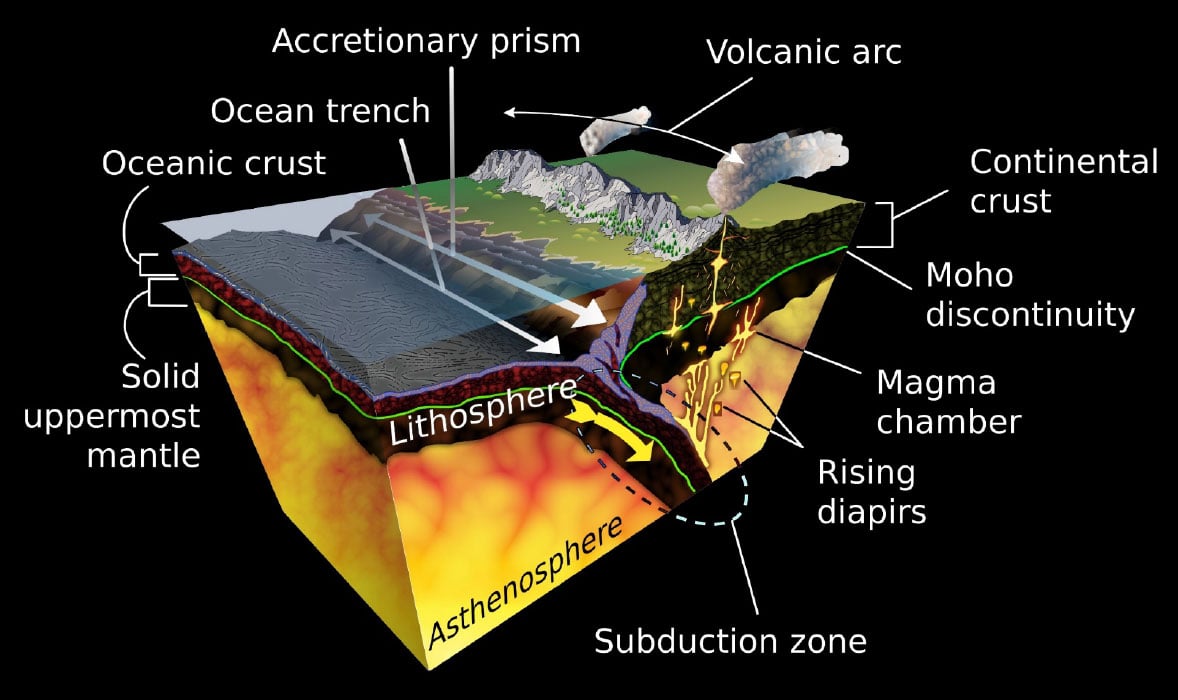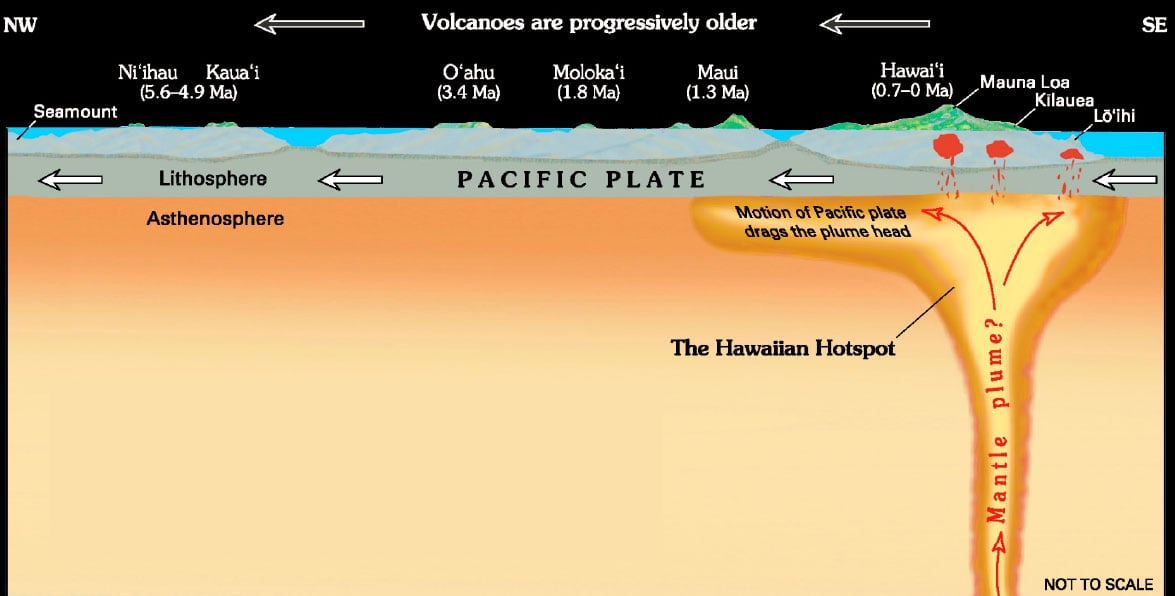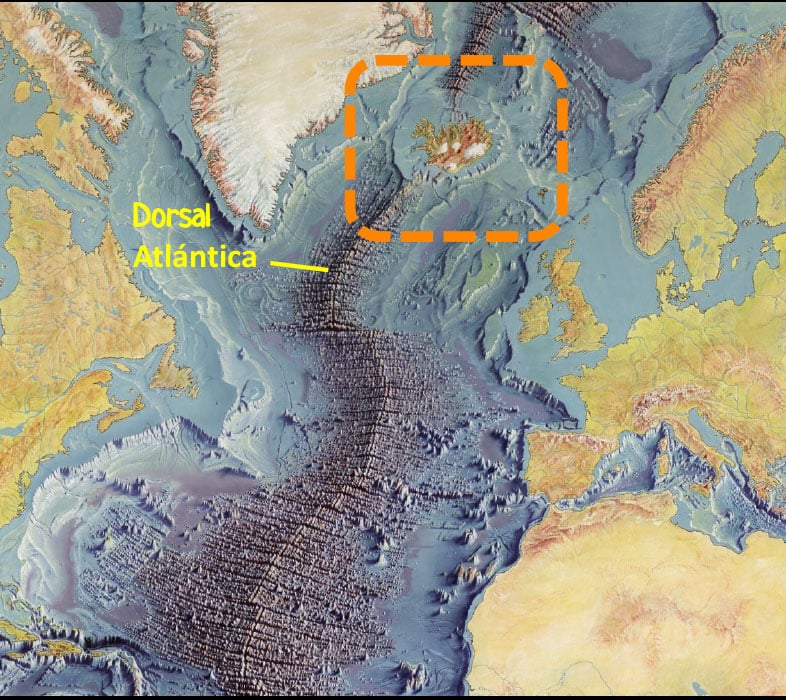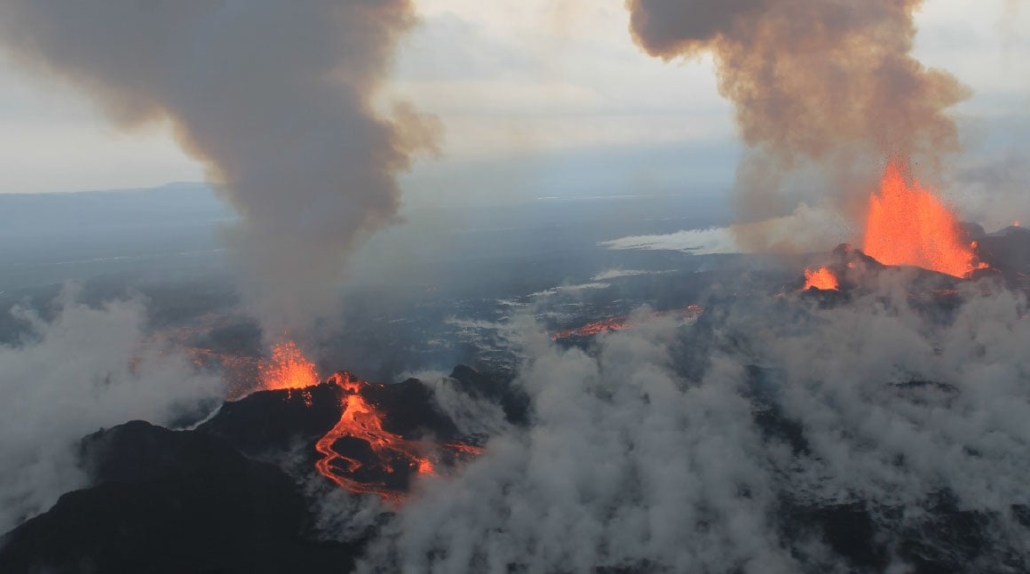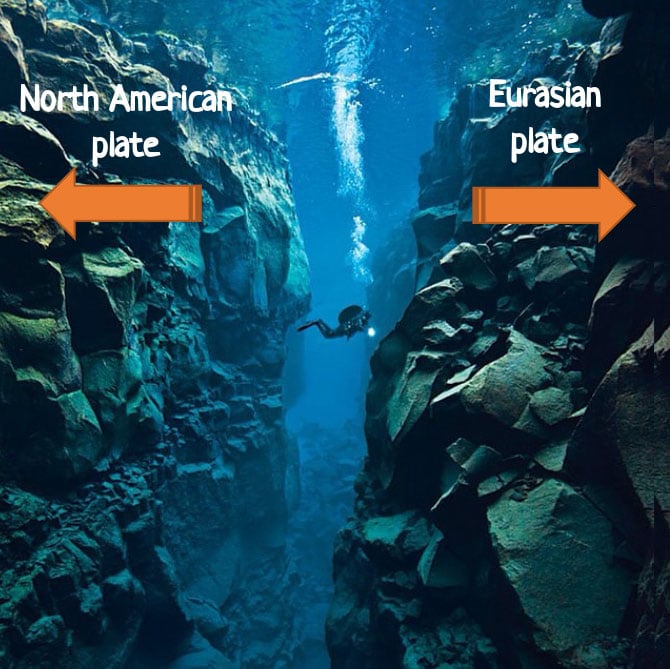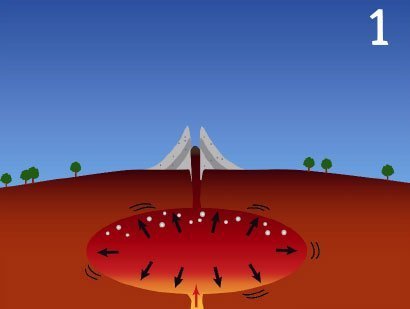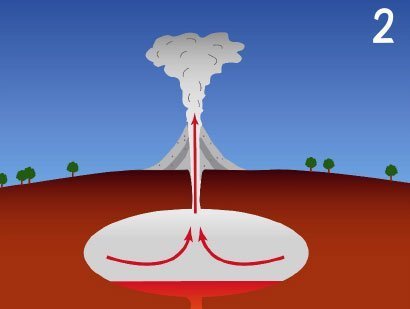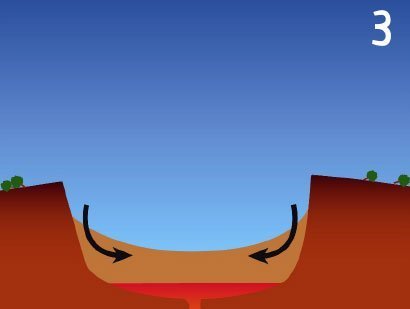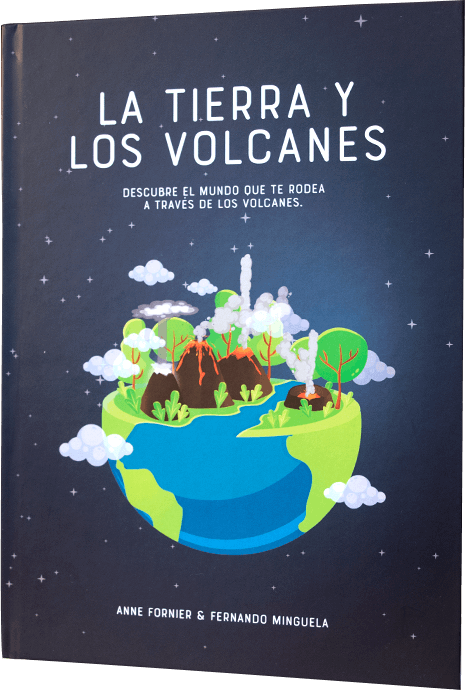By definition, a volcano is the product of the arrival of a magma at the topographical surface. But why do volcanoes erupt?
At depth the chemical and pressure and temperature conditions can be met so that the solid mantle rock melts. For example, in a subduction zone, the oceanic crust rich in so-called “hydrated” minerals (acquired during hydrothermal reactions at the bottom of the ocean), sinks into the mantle. At a given depth, these minerals become unstable and release their water, which will rise and cause the ideal conditions for the mantle to melt.
This occurs approximately at the same depth along the whole subducting crust. For this reason the Andean volcanoes are aligned at a relatively constant distance from the Pacific coast, forming a volcanic arc.
It is important to know that the deeper we go inside the Earth, the more the temperature rises and the more the lithostatic pressure (pressure exerted by the rock column above a given point) also increases. The increasing temperature would tend to melt the rock but the pressure prevents it. Only sometimes a mantle batch rises from the boundary with the core. This solid but deformable plume accumulates under the lithosphere without having time to cool down, while the pressure decreases without delay. The heat from the plume is therefore able to melt rocks of the lithosphere: this is a volcanic hot spot!
But that’s not all! This process occurs over the course of several million years. During this time, the tectonic plate is shifting above the hot spot that remains at the same location and can produce a series of volcanoes aligned as the plate moves.
This happens for example under the Pacific plate, giving rise to the formation of the Hawaiian archipelago
By Joel E. Robinson, USGS. – Cropped from the 108 MB PDF file available here and described here., Dominio público, https://commons.wikimedia.org/w/index.php?curid=18129204
Nature is wonderful and full of surprises!
By coincidence, a hot spot rose right under the Atlantic Ridge, pushing this last above sea level. This exceptional case led to the formation of Iceland and its equally exceptional volcanism!
Public domain – Manuscript painting of Heezen-Tharp “World ocean floor” map by Berann
peterhartree (CC BY-SA 2.0), https://www.flickr.com/photos/41812768@N07/15145861552
majiedqasem (CC BY-ND 2.0), https://www.flickr.com/photos/48943290@N08/15217075522/
Y en la corteza, ¿qué ocurre?
And in the crust, what’s going on? The magma can follow a direct path from its source to the surface but often, its path is more complicated. The magma is sometimes found blocked in the crust (< 60 km depth) and accumulates in a magmatic reservoir (or chamber).
- Just like the liquid in a bottle of Champagne, magma contains pressurized dissolved gas. If the magma chamber gets fractured: for example if the pressure in the reservoir becomes too high and it breaks the roof of the chamber), the gas is brutally decompressed and separates from the magma, forming bubbles: this is referred to as “exsolution”.
- In its rapid ascent, the gas drags the magma towards the surface and, just like with bottle the Champagne suddenly uncorked, this is the eruption!
- Sometimes, the magma chamber can be emptied by the most violent eruptions, and its roof can collapse and form a caldera. But this is not always the case…
In most cases, the magma chamber is only partly emptied, and fills with new magma again from a deep source, and stage 1 and 2 repeat again and again.
Observe the inflation and deflation of the Etna volcano, as a consequence of the filling and emptying of the magma chamber!
OUR BOOK
EARTH AND VOLCANOES>
EARTH AND VOLCANOES
A direct journey into the knowledge of the volcanic world by Anne Fornier and Fernando Minguela of Volcano Active Foundation.
“When we started giving the Volcano School masterclass to children in primary schools, we realized that all the books about volcanoes were fantastic, but none explained in a direct way and designed for the little ones, from their origin, their parts, types of volcanoes, dangers…”
Educating our children in the Environment, through the knowledge of the volcanic world, is to give one more opportunity to the planet and its generation. By buying our book you collaborate in their education and that of thousands of children around the world

